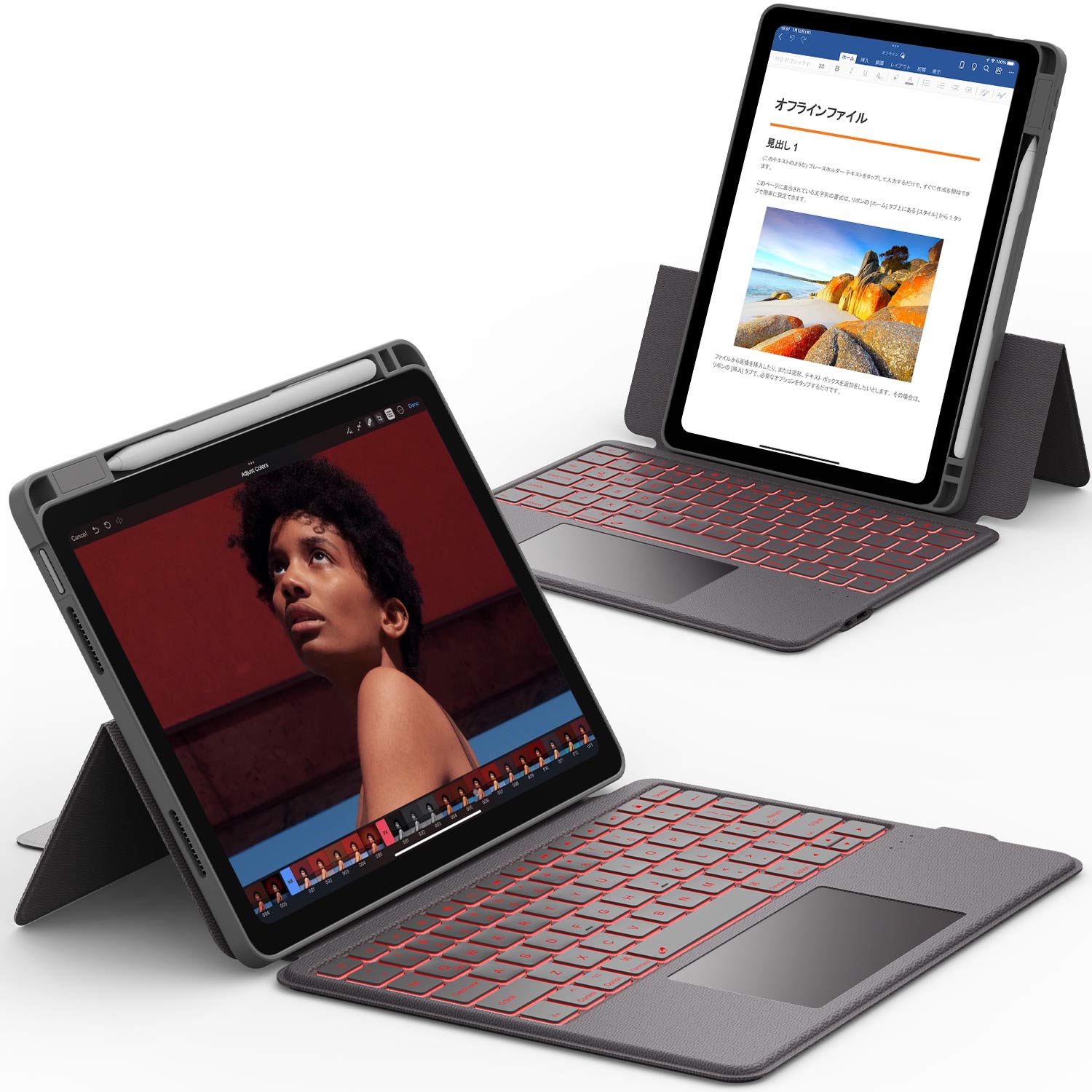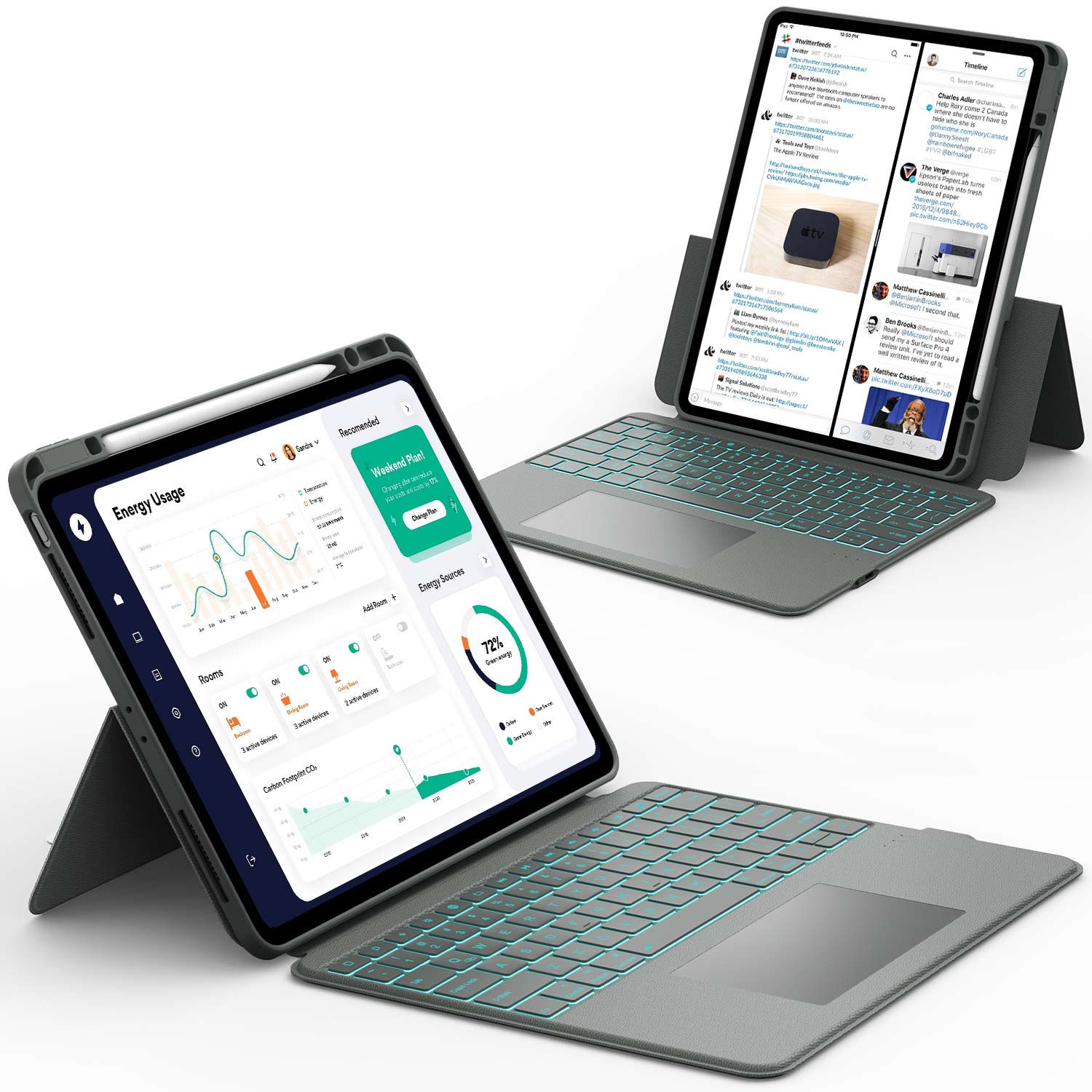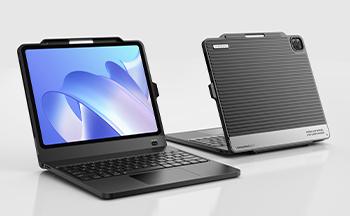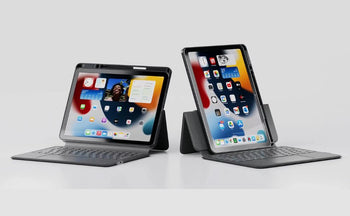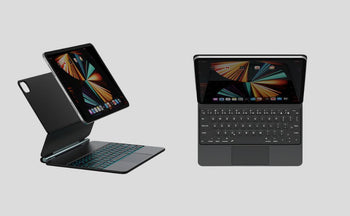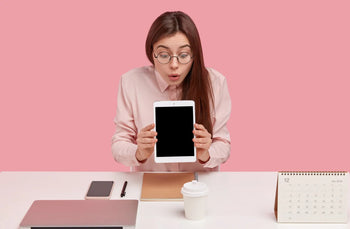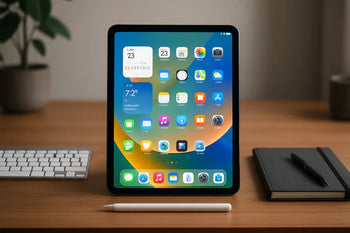The best tablet for elderly is one that’s simple, clear, and easy to use without feeling overwhelming. Seniors want a device that helps them stay connected with family, enjoy reading or streaming, and maybe even manage health apps, all without a steep learning curve.
But with so many tablets on the market, how do you know which one is the right fit? Don’t worry, we’ve done the work for you.
In this guide, we’ll break down the top options, key features to look for, and even the best cases to keep them safe. Read on to find your perfect match!
Key Takeaways
- Larger screens and simple controls make tablets easier to use
- Comfort, weight, and battery life matter for everyday use
- The best tablet for elderly balances usability with modern features
Protect your device in style with our iPad case collection.
Why Tablets Are Great for Seniors

Tablets give seniors a lightweight, portable way to stay connected and entertained—without all the fuss of a computer. Touch-friendly screens, big text, and easy apps make daily stuff more approachable.
Simple Communication and Video Calls
Tablets make it easy to keep in touch with friends and family on Zoom, FaceTime, or WhatsApp. The bigger screen helps you actually see faces, and tapping around is simple.
Voice-to-text features mean you don’t have to type out long messages. Texting, emailing, and even posting online get a lot easier.
Video calls can really help with loneliness. Older adults who connect online more often feel less isolated. Tablets make that possible with just a few taps.
Entertainment: Reading, Streaming, and Games
One tablet can cover a lot: reading, watching, listening, and playing. Apps like Kindle or Apple Books let you adjust font size and brightness, which is a lifesaver if your vision isn’t what it used to be.
Streaming stuff like Netflix, YouTube, and Spotify is easy to set up. Seniors can take their shows or music to the couch, the bed, or even outside easily.
Games for tablets can keep your mind sharp. Puzzle apps, word games, and memory games are all popular. Some are even made just for seniors, focusing on brain health and simple controls.
Health Apps, Telemedicine, and Online Services
Tablets can help seniors manage their health, too. They can see your doctor over a secure video call without leaving home. That’s a big deal if getting out is tough.
Apps for tracking medications, blood pressure, or blood sugar are out there. They’ll even ping you with reminders so you don’t forget a dose.
Seniors can order groceries, manage prescriptions, or schedule rides with apps like Instacart or Uber. It’s all right there, and it can make life a lot simpler.
To explore affordable creative tools, check out our article: The Best Budget Drawing Tablet with Must-Have Features.
Best Tablets for Elderly in 2025

The right tablet depends on what you need—easy navigation, clear screen, or features that fit your daily life. Some tablets keep things super simple, while others offer extra power for video calls, reading, or streaming.
Apple iPad – Reliable and Beginner-Friendly
The Apple iPad gives you a smooth experience with iPadOS. It supports large icons, simple navigation, and you can talk to Siri for voice commands.
The latest iPad (2025 model) has a bright 10.9-inch Liquid Retina display—text and images look sharp. It’s great for FaceTime calls, reading, or just browsing the web.
You can use the Apple Pencil for notes or doodling. The App Store has tons of apps, from health trackers to brain games.
Setup feels easy, thanks to Apple’s step-by-step guide. If you already own an iPhone, syncing is automatic. Battery life sticks around 10 hours, so you can go all day.
Samsung Galaxy Tab – Vibrant Display, Versatile
The Samsung Galaxy Tab S9 series sports a sharp AMOLED display—reading, photos, and videos look vivid and crisp. Adjusting text size and brightness is simple, which helps if your eyesight isn’t perfect.
Samsung’s One UI comes with Easy Mode for bigger icons and a simpler home screen. The S Pen lets you jot down notes or sketch. You can even split the screen, so you’re video calling and checking your calendar at the same time.
Battery life goes up to 12 hours, and fast charging gets you back online in a hurry. If you’re into Android, the Galaxy Tab is flexible and lets you tweak things to your liking.
Amazon Fire HD – Affordable and Easy to Use
The Amazon Fire HD 10 (2025 edition) is super budget-friendly for seniors. It’s got a 10.1-inch screen that’s good enough for reading, streaming, or browsing.
The interface is straightforward, with quick links to Kindle books, Prime Video, and Alexa voice commands. You can ask Alexa to open apps, play music, or remind you about meds—great if you’re not into typing.
The Fire HD is lighter than most iPads or Galaxy Tabs, so it’s easier to hold for long stretches. Battery life is around 12 hours. It doesn’t support the full Google Play Store, but you’ll find plenty of popular apps in Amazon’s Appstore.
GrandPad – Designed Specifically for Seniors
The GrandPad exists just for seniors—no extra features, no cluttered menus. Its interface has big buttons, clear text, and navigation that just makes sense.
You can make video calls, send voice emails, and swipe through family photos with a couple of taps. It’s refreshingly straightforward.
This tablet comes with a built-in 4G LTE connection, so you don’t have to worry about Wi-Fi at home. The charging cradle makes powering up as easy as setting the tablet down—no fiddling with cords.
Family members can manage contacts and apps remotely through a companion app. That way, you keep the device safe from spam and unwanted downloads.
The GrandPad doesn’t try to compete with an iPad or Galaxy Tab on horsepower. Instead, it just aims to keep people connected without hassle.
Read our article: Best Android Tablet for Kids for Learning & Play to find safe and fun choices for children.
What to Look for in a Tablet for Elderly

If you’re picking out a tablet for an older user, focus on comfort, ease, and features that actually make life easier. The right device should handle vision, hearing, and mobility needs, while being simple to charge, hold, and use.
Large, Bright Screen for Aging Eyes
Eyes change as we age. A 10-inch or bigger screen gives you space for text, buttons, and apps, so there will be no squinting or missed taps.
Look for high brightness (at least 400 nits) so you can see the screen in any light. An OLED display really pops, especially in low light.
Most tablets let you bump up text size or zoom the screen. If you wear glasses or just hate glare, a matte or anti-glare screen helps a lot.
Long Battery Life and Easy Charging
You want at least 8–12 hours on a single charge, so you can watch, read, or chat all day without interruption.
Charging shouldn’t be a puzzle. USB-C connectors are easier than the old micro-USB ones, and some tablets charge wirelessly—just set it down and walk away.
Visible battery icons and alerts help avoid surprises. Fast charging is nice, too—even half an hour can get enough juice for a call or a movie.
Lightweight Design and Simple Interface
Weight matters. A tablet under 1.2 pounds (550 grams) is way easier to hold for a while, and slim models tuck away nicely.
The interface should be uncluttered. Big icons, clear labels, and not too much going on. Some tablets have “easy mode” or custom launchers with larger buttons and a cleaner home screen.
Physical buttons for volume and power are handy. A sturdy case with a built-in stand? That’s a bonus, especially if you want to prop it up and relax.
Accessibility Tools for Vision and Hearing Support
Accessibility features can be a game-changer. Screen readers read text out loud, and magnifier tools let you zoom in on anything you want.
For hearing, look for hearing aid compatibility and live captions on calls or videos. Bluetooth is a must if you want to use wireless hearing aids or headphones.
You can set up custom gestures or voice commands to make things even easier. Built-in health apps can nudge you with reminders for meds or appointments, which is honestly super helpful.
Read our guide, iPad vs Samsung Tablet: Which One Should You Choose? to see which option fits your needs best.
Get a Case to Protect Your Senior’s Tablet

A case keeps the tablet safe from drops, scratches, and even the occasional coffee spill. It also makes the device easier to hold, especially if you want bigger buttons, a better grip, or a stand for hands-free use.
Chesona Folio Cases for Lightweight Protection
CHESONA Step Series Keyboard Case for iPad Pro 11" 4th/3rd/2nd/1st Gen/Air 10.9"
If a keyboard isn’t needed, a Chesona folio case offers solid yet lightweight protection. These cases are slim, easy to carry, and ideal for travel or just moving around the house.
The folio style covers both the front and back, so the screen stays safe when you’re not using it. It opens like a book, which just feels natural.
Many folio cases support auto sleep/wake, so the tablet powers on when you open the cover and locks when you close it. That saves battery and means you don’t have to hunt for tiny buttons.
The material is usually soft-touch leather or fabric. It feels good in the hand and helps prevent slips.
Chesona Stand Cases for Video Calls and Streaming
CHESONA Cloud Series Keyboard Case for iPad Pro 13'' (M4) 2024
If your senior loves video calls with family or streaming shows, a Chesona stand case just makes sense. You get multiple viewing angles, so the tablet stands up for calls or leans back for movies.
The stand design keeps the tablet steady on a table, even if it gets nudged. That lowers the risk of drops and makes hands-free use simple.
Some stand cases have rotating holders, so you can switch between portrait and landscape mode without taking the tablet out. That’s handy for Zoom or FaceTime in portrait, but movies look better in landscape.
The extra stability and easy angle adjustments make this style the most comfortable for long sessions of watching or chatting.
Add durability and elegance with our leather iPad case collection.
Final Thoughts on the Best Tablet for Elderly
When you’re picking a tablet for an older adult, you want something simple, clear, and comfortable to hold. Lightweight design and a big screen really do make reading and tapping easier.
Battery life makes a difference. A tablet that goes 8–10 hours per charge means less fuss with cords.
Wi-Fi stability and quick setup help keep things smooth. Nobody wants to wrestle with a slow connection.
Many seniors actually enjoy tablets for health apps, video calls, and entertainment. There’s research out there showing that apps designed for older users boost confidence and cut down on frustration.
If you match the right features to the person, a tablet isn’t just another gadget. It becomes a way to stay connected, learn new things, and just enjoy life a bit more.
Make typing and navigation easier by exploring our iPad keyboard case with touchpad collection. Also, for note-taking or journaling made easy, read our article, Best Writing Tablet: Choose Yours Today.
Frequently Asked Questions
What is the easiest tablet for seniors to use?
The Apple iPad (9th or 10th Gen) is usually the easiest. The layout is clean, there’s a huge app store, and Apple’s support is solid.
You get a bright 10.2–10.9 inch screen and helpful accessibility settings like zoom, voice commands, and larger text. Amazon’s Fire HD 10 is another good bet—affordable, light, and you can add a simple launcher to keep things tidy.
What is the best Samsung tablet for an older person?
The Samsung Galaxy Tab A9+ is a solid pick. It’s budget-friendly, has an 11-inch display, and Samsung’s One UI includes easy modes with bigger icons and text.
If you want something faster that’ll last longer, the Galaxy Tab S9 FE has a sharper display and stronger battery life. But it does cost more.
Which tab is best for long-term use?
The iPad Air tends to last the longest. Apple keeps updating its tablets for years, so you get smooth performance even after 4 or 5 years.
High-end Samsung tablets like the Galaxy Tab S9 hold up well too, with at least four years of Android updates promised.
How to make an iPad easier to use for seniors?
Head into Settings > Accessibility and turn on features like VoiceOver, Zoom, or Display & Text Size. You can also enable AssistiveTouch to make actions like going home or taking screenshots just a tap away.
Adding widgets for weather, your calendar, or video calls can make the home screen more useful and less overwhelming.
Are there any tablets that offer simplified internet access for the elderly?
Absolutely, some tablets have senior-friendly modes. The GrandPad tablet stands out since it's designed just for older adults.
It uses large icons and simple menus. There's built-in customer support too, and you won't find a confusing app store.
If you already have an Android tablet, you can try apps like Simple Launcher. That app makes web browsing and the home screen much less cluttered.
